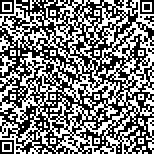张祎辰,王强,孟萍萍,等.不同频率健侧半球重复经颅磁刺激对脑卒中后吞咽障碍的影响[J].中华物理医学与康复杂志,2020,42(4):295-299
扫码阅读全文

|
| 不同频率健侧半球重复经颅磁刺激对脑卒中后吞咽障碍的影响 |
|
| |
| DOI:10.3760/cma.j.issn.0254-1424.2020.04.002 |
| 中文关键词: 脑卒中 吞咽障碍 重复经颅磁刺激 表面肌电图 |
| 英文关键词: Stroke Dysphagia Transcranial magnetic stimulation Surface electromyography |
| 基金项目: |
|
| 摘要点击次数: 6229 |
| 全文下载次数: 7343 |
| 中文摘要: |
| 目的 观察高频、低频重复经颅磁刺激(rTMS)作用健侧半球吞咽皮质代表区对脑卒中后吞咽障碍的影响。 方法 选取42例脑卒中后吞咽障碍患者,采用随机数字表法将其分为高频组(14例)、低频组(13例)及对照组(15例)。3组患者均给予传统吞咽康复训练,高频组对健侧半球舌骨上肌群运动皮质代表区给予5 Hz rTMS治疗,低频组于相同部位给予1 Hz rTMS治疗,对照组则给予假rTMS刺激;3组患者刺激时间及疗程均相同。于治疗前、治疗2周后分别给予患者吞咽造影(VFSS)及表面肌电检查(sEMG),并采用渗透-误吸量表(PAS)、功能性吞咽障碍量表(FDS)、均方根值(RMS)对各组患者进行疗效评估。 结果 治疗后3组患者PAS评分、FDS评分及sEMG检查结果均较组内治疗前显著改善(P<0.05)。与对照组比较,治疗后高频组、低频组PAS评分、FDS评分均明显改善(P<0.05)。高频组治疗前、后FDS差值[(9.92±4.45)分]明显大于低频组FDS差值[(7.15±3.13)分],组间差异具有统计学意义(P<0.05)。 结论 高频、低频rTMS刺激健侧半球舌骨上肌群运动皮质代表区均可有效改善脑卒中患者吞咽功能,并以高频rTMS的治疗效果可能更显著。 |
| 英文摘要: |
| Objective To explore the effect of high-frequency and low-frequency transcranial magnetic stimulation (rTMS) on the unaffected pharyngeal motor cortex of dysphagic stroke survivors. Methods Forty-two stroke survivors with dysphagia were enrolled and randomly divided into a high-frequency stimulation group (n=14), a low-frequency stimulation group (n=13), and a sham group (n=15). All received conventional swallowing training. The high- and low-frequency stimulation groups additionally received 250 pulses of 5Hz or 1Hz rTMS over the cortical representation of the mylohyoid muscle on the unaffected side daily for 2 consecutive weeks. In the sham group, sham rTMS was applied with identical protocols. Before and after the intervention, all subjects were subjected to a videofluoroscopic swallowing study and surface electromyography (sEMG). They were also evaluated using the fuctional dysphagia scale (FDS) and the penetration aspiration scale (PAS). Results After the intervention, a significant improvement was observed in the average PAS, FDS and sEMG results in both rTMS groups compared with the sham control group. The average FDS score of the high-frequency stimulation group had improved significantly more than that of the low-frequency group. Conclusions rTMS of the contra-lesional cortical representation of the mylohyoid muscle at either 5Hz or 1Hz can effectively improve dysphagia post-stroke. The higher frequency gives superior results. |
|
查看全文
查看/发表评论 下载PDF阅读器 |
| 关闭 |